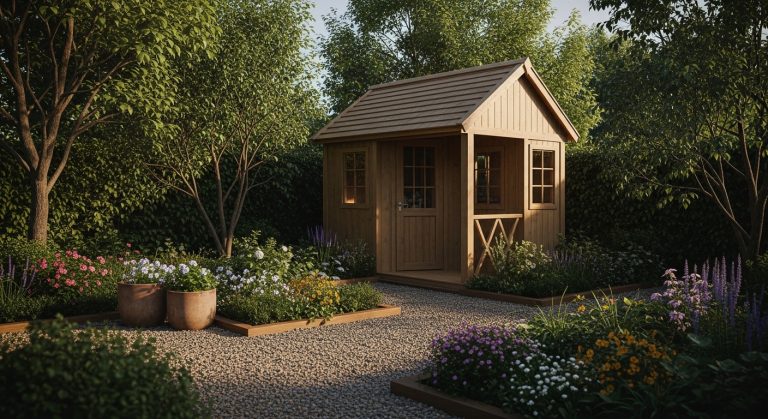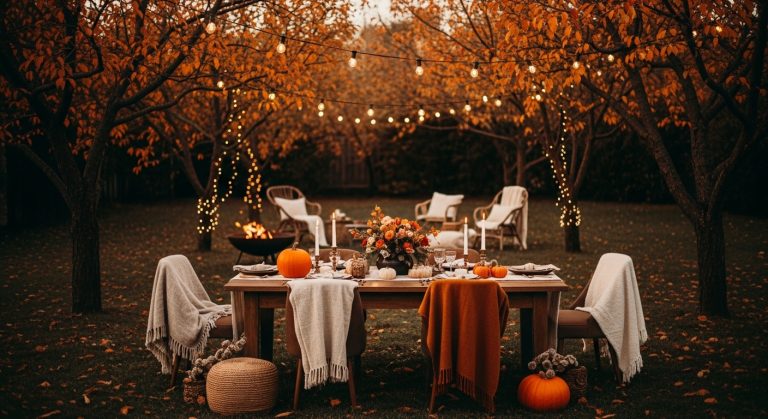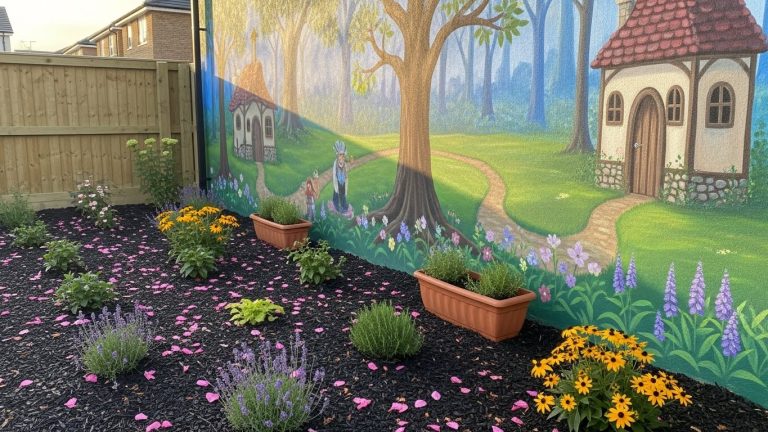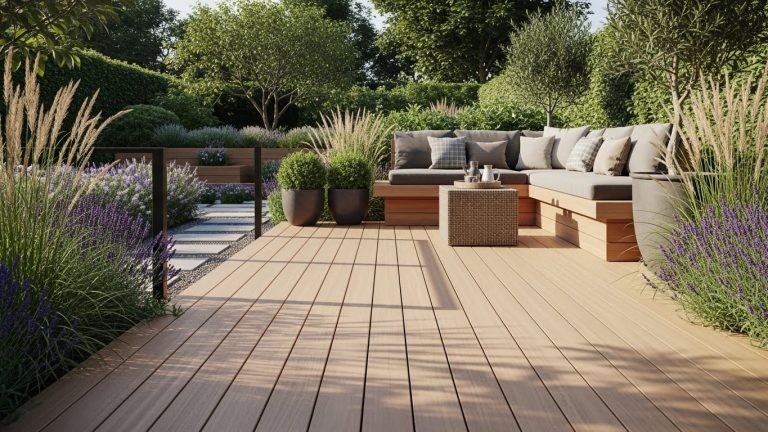15 Waterfall Garden Ideas That Turn Any Yard Into a Calm Little Escape
Ever walked into someone’s backyard and felt that instant “oh wow… this feels peaceful” moment? I swear, nine out of ten times, there’s moving water involved. There’s something magnetic about waterfalls — they add motion, sound, and life in a way plants alone simply can’t. And if you’ve ever daydreamed about creating your own little paradise, then waterfall garden ideas can seriously transform your outdoor space more than you’d expect.
I’ve been borderline obsessed with backyard waterfalls ever since I stayed at a cabin that had a tiny trickling feature beside the porch. It wasn’t extravagant — just rocks, ferns, and a soft stream of water — but the effect was unreal. It made everything feel still and grounded. And honestly? That’s something most of us could use these days.
Whether you want something minimal or something dramatic, there’s a waterfall style for every personality and budget. Some ideas work beautifully even in small courtyards. Others are more “go big or go home” energy. But all of them add that instant sense of zen people chase when they escape to nature.
Below, you’ll find 15 unique, well-developed waterfall garden ideas, each broken down with pros, cons, and a final takeaway. I kept it friendly, honest, and full of useful detail — exactly like you asked.
Let’s get into it.
1. Natural Rock Cascade Waterfall
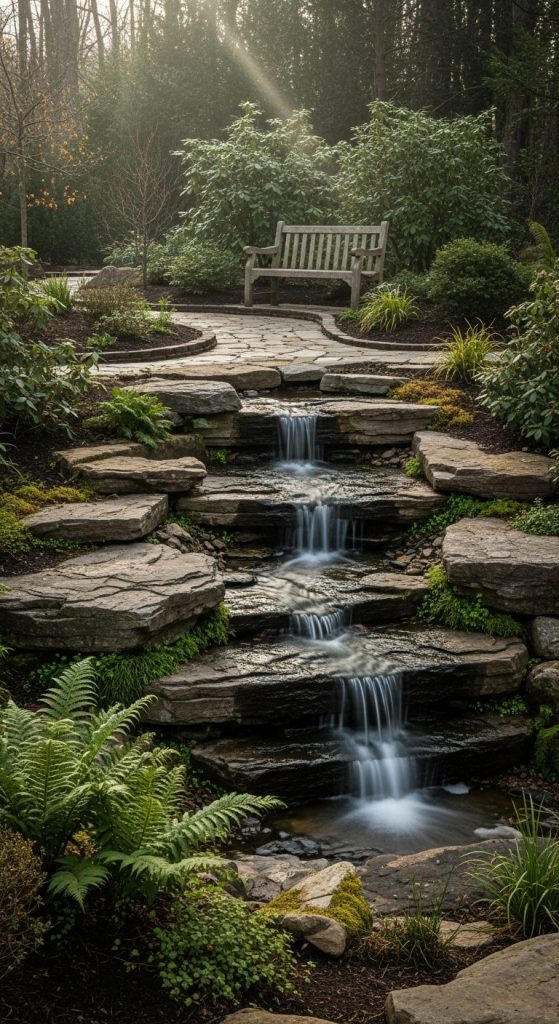
There’s a reason natural rock cascades are the poster child of backyard waterfalls. They look wild, organic, and effortlessly beautiful — as if nature sculpted them into your yard overnight. If you love that rugged, earthy charm, this style feels like a slice of forest in your own home.
Pros
- Timeless and organic appearance that blends well with almost any garden style.
- Durable materials — rocks age beautifully and handle weather like champs.
- Great sound variation depending on rock placement and drop height.
- Flexible in size — from small cascades to full multi-tier features.
Cons
- Can be heavy and may require reinforcement or professional installation.
- Rock sourcing and placement can add to the overall cost.
This one is perfect if you want a waterfall that feels like it’s been part of the landscape forever.
2. Pondless Waterfall (Kid- and Pet-Safe!)
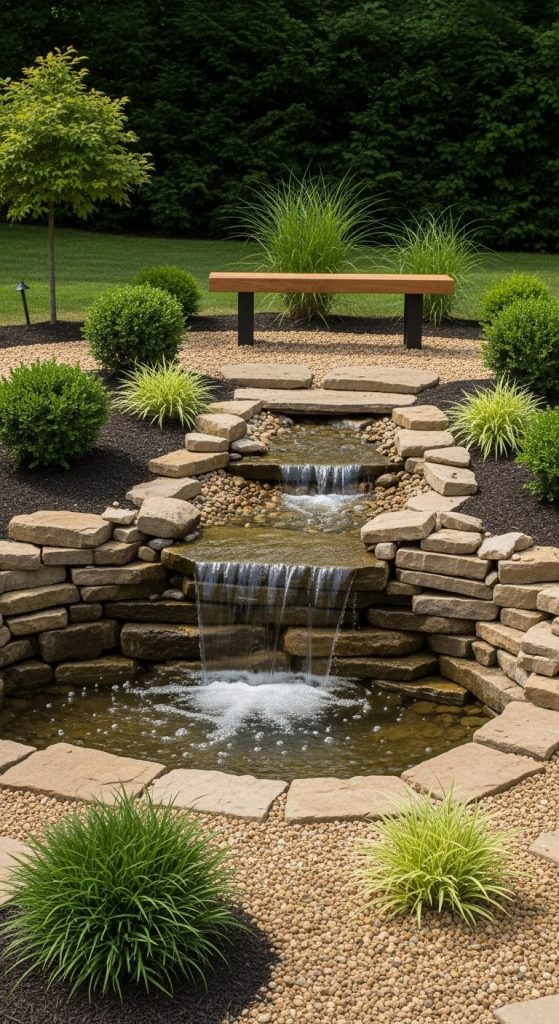
Pondless waterfalls skip the open pond and hide the water reservoir underground. This makes them way safer for families with kids or curious pets, while still giving you that soothing water sound.
Pros
- Lower maintenance — no pond cleanup, algae scraping, or skimmer issues.
- Ideal for small yards where space is limited.
- Very safe since there’s no standing water.
Cons
- You lose the visual element of a pond.
- Pump systems need occasional monitoring.
If you want a waterfall without babysitting it, a pondless setup IMO is one of the smartest options.
3. Modern Sheet-Fall Water Wall

If crisp lines, symmetry, and minimalism are your jam, then the sheet-fall water wall will make your design brain very happy. Water flows as a clean, flat sheet, often into a sleek basin or trough.
Pros
- Ultra-modern look perfect for contemporary spaces.
- Even water flow makes a smooth, calming sound.
- Great for patios or outdoor lounge areas.
Cons
- Requires precise leveling to avoid uneven flow.
- Pumps must be strong and reliable.
This design is your best friend if you love that upscale spa vibe.
4. Tropical Waterfall Oasis

Ever dreamt of Bali, Hawaii, or Thailand–style lushness? Tropical waterfall garden ideas bring that resort feeling right into your backyard. Think big leaves, warm textures, and soft flowing water.
Pros
- Incredibly immersive and emotionally uplifting.
- Pairs beautifully with ferns, palms, elephant ears, and bamboo.
- Creates natural humidity — great for tropical plants.
Cons
- Tropical plants may require seasonal protection in cooler climates.
- Higher ongoing maintenance.
If you want your yard to feel like a vacation, this is the move. 🙂
5. Mini Zen Garden Waterfall
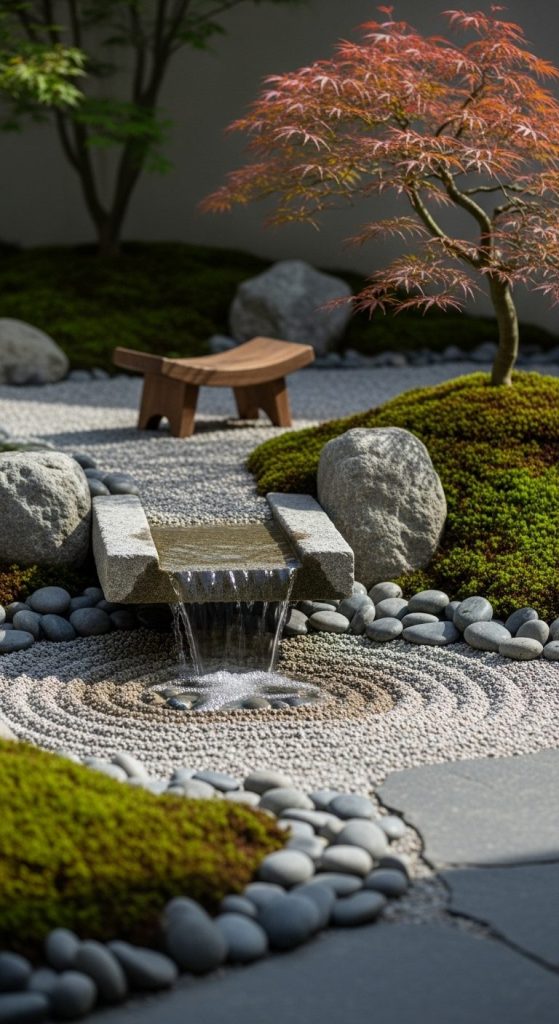
Zen-inspired waterfalls focus on simplicity and intention. Soft-water trickles, smooth stones, and minimal planting — the whole space feels meditative.
Pros
- Minimal and calming, never overwhelming.
- Works wonderfully in small patios or courtyard gardens.
- Pairs perfectly with sand, gravel, and Japanese maples.
Cons
- Subtle waterfall sounds may be too quiet for noise-masking.
- A bit niche stylistically.
This one is perfect if you want the mental reset of a Zen retreat without leaving home.
6. Tiered Stone Waterfall

Tiered waterfalls let water move across multiple “steps,” creating different sounds and visual interest at every level. They’re fun, dynamic, and almost sculptural.
Pros
- Creates varied soundscapes — soft trickles + louder drops.
- Very customizable in shape and height.
- Great for large gardens needing a focal point.
Cons
- Requires thoughtful design so tiers don’t look stiff or artificial.
- Can cost more due to materials and structure.
If you love movement and visual drama, tiered waterfalls never disappoint.
7. Waterfall + Koi Pond Combo

Combining a waterfall with a koi pond turns your backyard into a living, breathing ecosystem. Watching koi glide under falling water? Pure therapy.
Pros
- Beautiful and interactive — koi add personality and movement.
- Waterfalls help keep ponds oxygenated and healthier.
- Strong resale appeal for garden lovers.
Cons
- Koi require care, filtration, and feeding.
- Higher upfront installation cost.
If you enjoy caring for living things and love serene water gardens, this idea is gold.
8. Rustic Log or Driftwood Waterfall

Wood + water is a dreamy combination. Using driftwood or hollowed logs gives your waterfall a natural, woodland aesthetic that feels cozy, warm, and wild.
Pros
- Unique look you won’t see everywhere.
- Great for forest-themed or cottage-style gardens.
- Driftwood shapes create interesting water patterns.
Cons
- Wood breaks down over time and may need replacing.
- Not ideal for extremely dry, hot climates.
A little rustic flair goes a long way — this style adds personality instantly.
9. Container Waterfall for Small Spaces
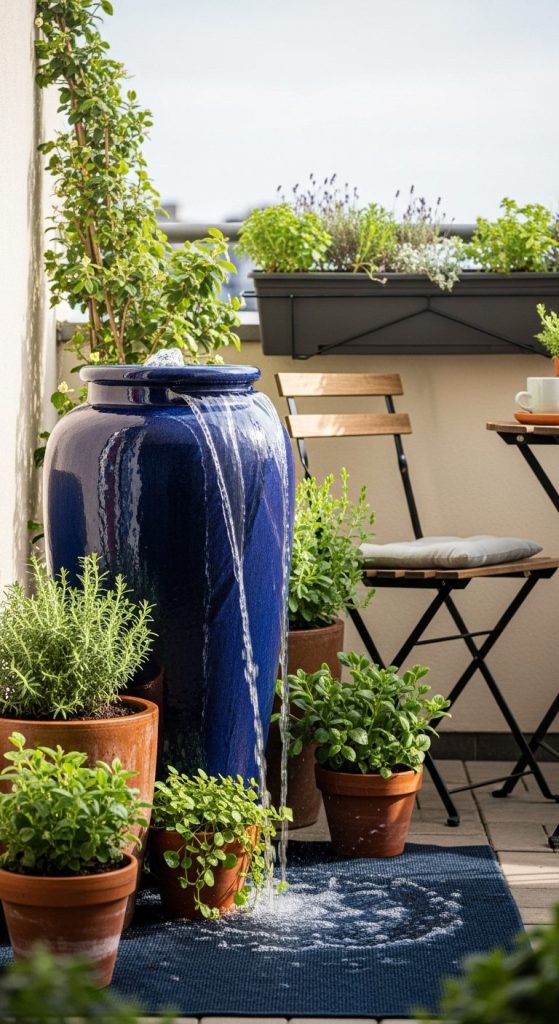
No yard? No problem. Container waterfalls use pots, urns, or tall planters to create a vertical water feature that fits balconies and tiny patios.
Pros
- Compact — perfect for condos and small gardens.
- Very budget-friendly.
- Easy to move or redesign.
Cons
- Smaller sound profile.
- Needs more frequent refilling due to low water volume.
This is proof that small spaces can still feel calm and luxurious.
10. Slate Waterfall Feature
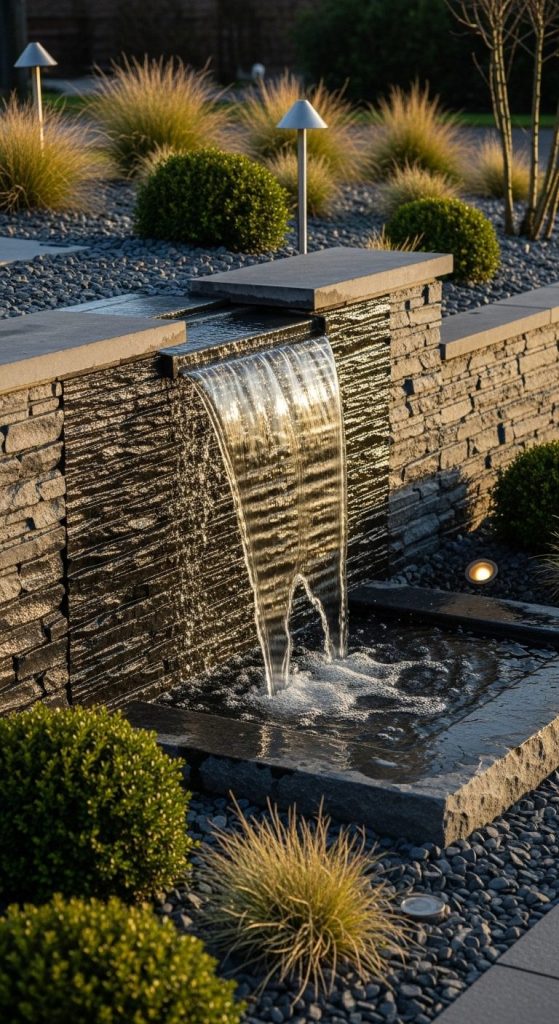
Slate is one of those materials that ages beautifully. Its natural texture and dark tone give waterfalls a moody, elegant look.
Pros
- Smooth yet textured — stunning with uplighting.
- Naturally resists water damage.
- Works for both modern and rustic themes.
Cons
- Can be slippery if used as stepping stones.
- Slate sheets may be pricey depending on size.
If you’re into drama and moodiness in design, slate is your new best friend.
11. Desert-Style Rock Waterfall
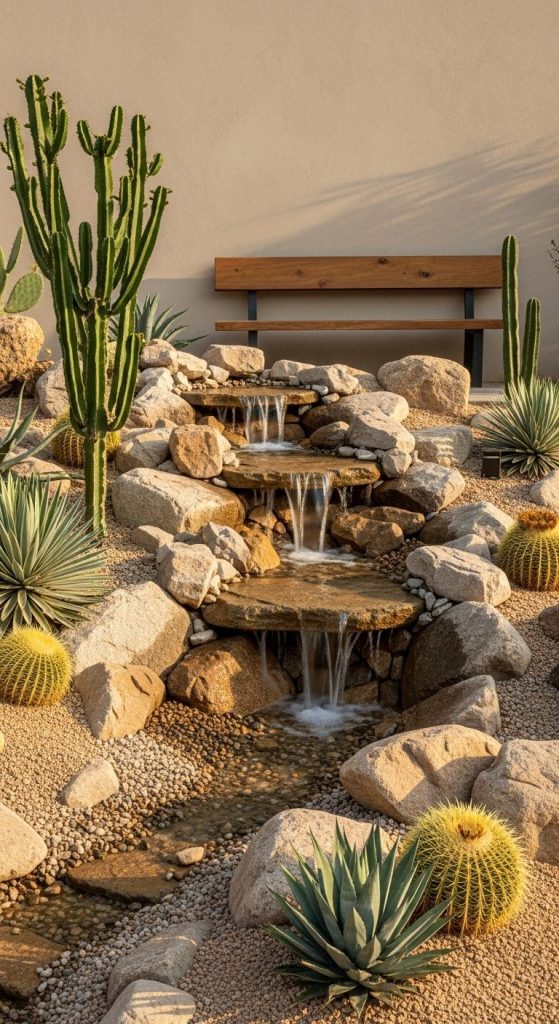
Who said you need lush greenery for a stunning waterfall? Desert-inspired designs use cacti, agave, and sandstone-like rocks for a grounded, earthy vibe.
Pros
- Very low maintenance — drought-friendly plants.
- Eye-catching contrast between arid plants and flowing water.
- Great for hot climates.
Cons
- Doesn’t fit every garden style.
- May feel too minimal for some tastes.
This idea proves you can blend dry landscapes with moving water beautifully.
12. Formal Garden Waterfall
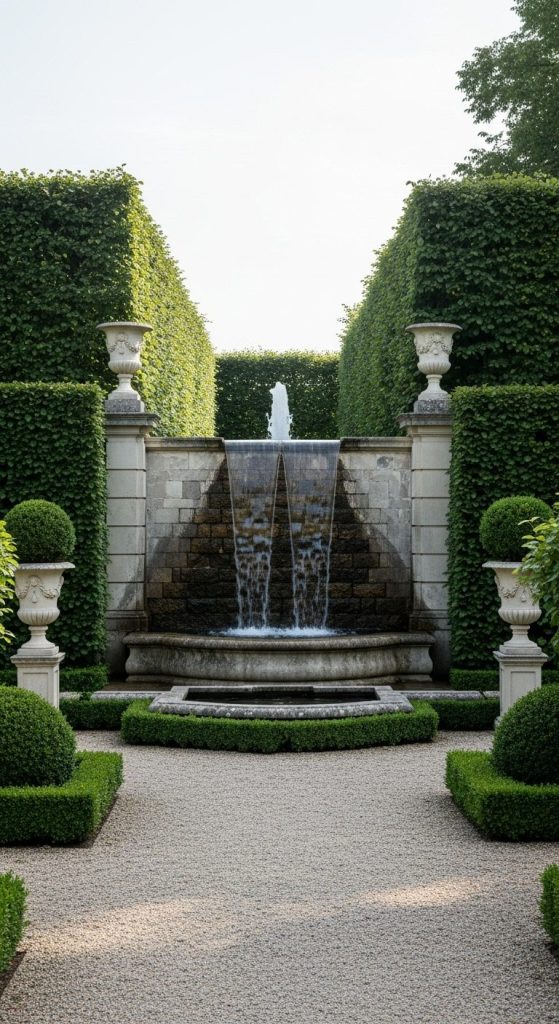
Think symmetry, stone walls, and classic shapes. A formal waterfall suits elegant gardens with a touch of luxury and traditional charm.
Pros
- Sophisticated and timeless aesthetic.
- Works beautifully with structured hedges and classic patios.
- Adds a sense of grandeur.
Cons
- Installation can be expensive due to materials.
- Less “relaxed” compared to natural designs.
If your home leans traditional or European-inspired, this is a perfect match.
13. Waterfall Staircase (Integrated Steps)
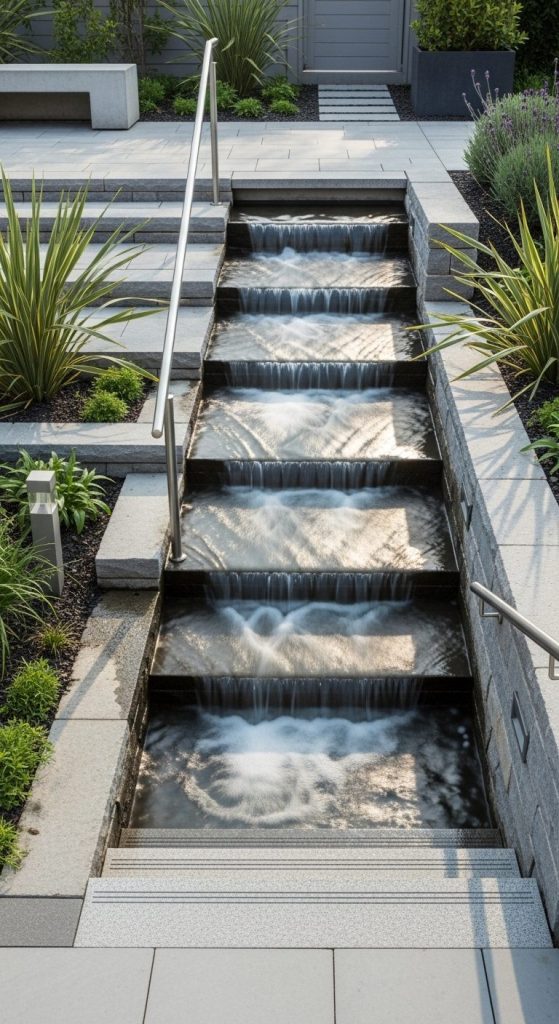
This one’s visually striking — integrating water into a staircase so water flows down the edges or center. It’s bold, creative, and memorable.
Pros
- Show-stopping focal point for modern gardens.
- Makes excellent use of slopes or raised patios.
- Combines function + beauty.
Cons
- Needs precise engineering.
- Slippery if not designed carefully.
When done right, it’s one of the most unique ways to feature moving water.
14. Rain Curtain Waterfall

A rain curtain pours water down in thin, parallel streams — almost like a delicate bead curtain. It’s relaxing, visually soft, and great for lounge spaces.
Pros
- Soft, pleasant sound without loud splashing.
- Dramatic at night with lighting.
- Works indoors or outdoors.
Cons
- Requires regular cleaning to keep the “rain lines” clear.
- Pumps must be strong enough for even flow.
If you want something artistic and serene, rain curtains hit that sweet spot.
15. Waterfall Stream Pathway

Instead of a single drop, a stream waterfall guides water along a winding path with small cascades. It feels like walking beside a tiny wild river every day.
Pros
- Highly immersive — movement and sound all along the path.
- Supports wildlife like birds and butterflies.
- Great for long gardens.
Cons
- Requires more space.
- Pump power must support long-distance water flow.
This brings that “nature walk” feeling right into your yard — it’s a complete experience.
Conclusion
If you’ve ever wished your yard felt calmer, more alive, or just a little more magical, one of these waterfall garden ideas is probably calling your name. Water has this almost supernatural ability to reset your mood — and adding a waterfall isn’t just a design upgrade, it’s a lifestyle upgrade. Whether you want a bold statement piece or a tiny trickling oasis, there’s something here for every style, climate, and budget.
My personal favorite? The pondless waterfall. It looks gorgeous, sounds soothing, and doesn’t come with the maintenance headaches of a full pond. But honestly, any waterfall can transform your outdoor space into the kind of place you actually want to spend time in — and isn’t that the whole point?
If any of these sparked inspiration, go for it. Your future self relaxing by the water will thank you.

William Martin is a passionate bowler who spends most of his weekends playing the sport. With years of intense experience under his belt, William decided to share his knowledge by creating BOWLING OCEAN. Join me on this journey to explore the world of bowling and discover the tips and tricks to becoming a pro.


